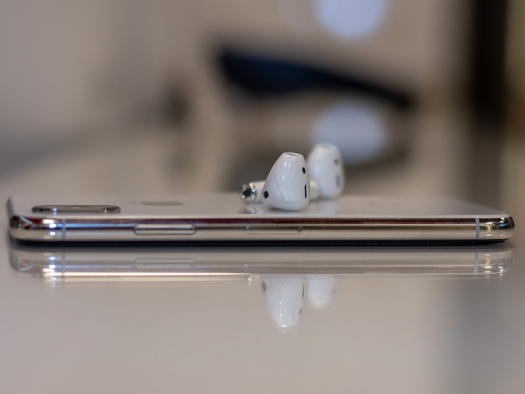AirPods.jpg

Photo by Christo Anestev / Pixabay.com
AirPods and other Bluetooth devices have made headlines recently – and it wasn’t because of a new product launch.
On March 7th, an article titled “Are AirPods and Other Bluetooth Headphones Safe?” was published on the blogging platform Medium.com. And it went viral.
I’ve written about the possible health effects of EMF radiation from cell phones in my article EMF Radiation? Should You Really Be Concerned? But we haven’t discussed radiation from Bluetooth devices yet.
So let’s get right to it: Do AirPods and other Bluetooth devices pose health risks like cancer? Where’s the evidence? Read on to find out!
What happened?
In the article, author Markham Heid reported that 250 scientists from 40 countries signed a petition in 2015 to the United Nations and the World Health Organization (WHO).
In the petition, the scientists called for “an independent multidisciplinary committee to explore the pros and cons of alternatives” to electric and wireless devices that emit electromagnetic fields (EMF).
Heid quoted one of the signers of the petition, Dr. Jerry Phillips of University of Colorado at Colorado Springs, who stated, “My concern for AirPods is that their placement in the ear canal exposes tissues in the head to relatively high levels of radio-frequency radiation…[evidence] indicates potential concerns for human health and development from all technologies that operate at radio frequencies.”
Simply put, Heid wrote that there is no evidence that Bluetooth devices are safe, and that this should be of a bigger issue due to the growing use of this technology.
Cell phone radiation has been shown to cause cancer in animals
Cell phones use non-ionizing forms of radiation. Non-ionizing radiation refers to any type of low-energy electromagnetic radiation that does not have enough energy to completely remove an electron from an atom or molecule. Unlike ionizing radiation used by X-rays and CT scans, non-ionizing radiation is only capable of heating and excitation, or causing the electron to move to a higher energy state. Examples of non-ionizing radiation include:
- UV light
- Visible light
- Infrared light
- Microwaves
- Radio waves
- Very low frequency (VLF), i.e., radio frequencies in the range of 3 to 30 kHz
- Extremely low frequency (ELF), i.e., radio frequencies in the range of 300 Hz to 3 kHz
Non-ionizing radiation was also initially thought to be unable to cause direct damage to your DNA.
But this has been a topic of ongoing debate. There is growing evidence that EMF can negatively affect living organisms, even at frequencies below international and national guidelines. In 2011, an international study showed increased risk of glioma, an often malignant brain tumor, among heavy cell phone users, prompting the International Agency for Research on Cancer (IARC) to classify radiofrequency EMF as “possibly carcinogenic to humans.”
Then, in 2018, the U.S. National Toxicology Program (NTP) released the much-anticipated, peer-reviewed findings of a pair of studies that examined the effects of cell phone radiation on mice and rats.
The NTP studies, which lasted for two years, exposed rats and mice to radiation replicating signal strengths of 2G and 3G technology. The studies showed evidence of different levels of carcinogenic activity:
- Clear evidence of carcinogenic activity
- Dose-related increase in incidences of malignant masses, such as schwannoma in the heart
- Some evidence of carcinogenic activity considered to be related to cell phone radio frequency radiation (RFR) exposure
- Incidences of malignant glioma in the brain
- Incidences of pheochromocytoma (benign, malignant, or combined) in the adrenal medulla
- Equivocal evidence of carcinogenic activity that may have been related to cell phone RFR exposure
- Incidences of adenoma or carcinoma (combined) in the prostate gland
- Incidences of benign or malignant granular cell tumors in the brain
- Incidences of adenoma in the pars distalis of the pituitary gland
- Incidences of pancreatic islet cell adenoma or carcinoma (combined)
- Incidences of adenoma or carcinoma (combined) of the liver
The researchers also found that the exposure increased the risk of heart conditions, DNA damage, and changes to the reproductive system resulting in lower birth weights in baby rats born during the trials.
Keep in mind that these studies did not test the effects of 4G or 5G. Some of the attendees of the NTP Technical Reports Peer Review Panel Presentations expressed concerns that the addition of 5G high-frequency transmission on top of 3G and 4G will result in more disease, essentially “microwaving” the U.S. population.
Furthermore, the NTP studies were not lifetime studies. Since 60% of all cancers in humans occur after age 60, there is concern that the 2-year cutoff would have missed a dramatic increase in incidences of cancer.
Animal models are often poor predictors of human reactions, and it has been difficult to gather reliable conclusive evidence in human studies. In other words, we need more data on how the relatively new phenomenon of widespread cell phone use affects human health. Nevertheless, the findings were significant enough to raise skepticism about the harmlessness of cell phones.
What does this have to do with AirPods and other wireless devices?
First things first, the article written by Markham Heid is misleading. No, 250 scientists did not sign a petition warning that AirPods and other Bluetooth headphones cause cancer. The petition was created in 2015, and AirPods weren’t introduced to the public until 2016.
Still, AirPods and other wireless headphones use Bluetooth technology, which uses non-ionizing RFR like cell phones do. And just as we don’t have conclusive evidence that cell phone radiation poses a threat to human health, we have even less evidence about the safety or risk Bluetooth radiation.
But let’s look at some of the facts. Bluetooth delivers a much lower dose of radiation than cell phones and even visible light. When you use your cell phone, it needs to send and receives signals from a fixed cell tower, likely some distance away. But the distance traveled by signals from Bluetooth and other WiFi devices are much shorter (from your head to the cell phone, for example). This means that a Bluetooth radiofrequency requires much lower power to function than a cell phone does, which may translate into a reduced effect on your body.
One concern is that many people who use Bluetooth headphones wear them for many hours. Concentrated radiation of any form could have dangerous effects. But again, research has yet to reveal the threshold below which radio frequency signals pose no threat.
How can you reduce your exposure to EMF?
Whether you’re a precautionary type or you simply want to reduce your exposure to EMF, you can follow the tips I outlined in EMF Radiation? Should You Really Be Concerned? Here are additional recommendations:
- Keep cell phones and wireless devices away from your body when not in use. Keeping your cell phone an arm’s length away (especially when the battery is low) can reduce exposure.
- Sleep with cell phones and wireless devices away from the bed.
- Stick with wired headphones.
- Never wear your phone (keep it out of your pocket!)
- Limit children’s use of wireless devices.
- Turn off router at night.
So, should you be concerned?
Because Bluetooth devices are still relatively new, scientists lack data from long-term studies to prove possible relationships between the devices and cancer, or lack thereof. What we do know is that some individuals are much more sensitive to EMFs than others.
In addition to the methods above, consider using wired Internet connection whenever possible. It may be nearly impossible to avoid using cell phones and other wireless devices these days, but these steps may be able to help reduce the amount of radiation exposure.
References
Heid, Markham. Are AirPods and Other Bluetooth Headphones Safe? Medium: Elemental, March 7, 2019.
International Appeal: Scientists call for Protection from Non-ionizing Electromagnetic Field Exposure. EMF Scientist. May 11, 2015
The INTERPHONE Study. International Agency for Research on Cancer (IARC).
IARC Classifies Radiofrequency Electromagnetic Fields as Possibly Carcinogenic to Humans. International Agency for Research on Cancer (IARC). May 31, 2011.
Peer Review Panels. National Toxicology Program, National Institute of Environmental Health Sciences, part of the National Institutes of Health. March 26, 2018
Peer Review of the Draft NTP Technical Reports on Cell Phone Radiofrequency Radiation. National Toxicology Program, National Institute of Environmental Health Sciences, part of the National Institutes of Health. March 26, 2018
Are Your Wireless Headphones Causing Cancer? was originally published on Dr. Jill Carnahan's website, June 4, 2019. Used with permission.


